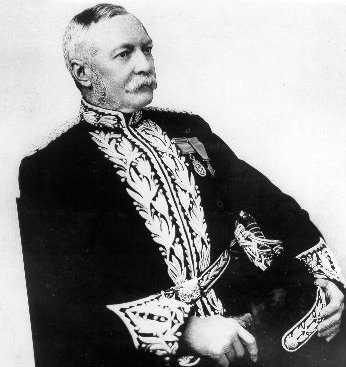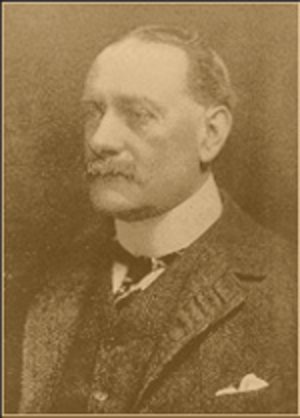Saucy Jacky
Pinchin St Torso


James Monro
Melville Macnaghten
Pinching Street Torso
Constable William Pennett came on duty at 10 pm on Monday, 9 September 1889. His beat was Ellen Street to the north, Pinchin Street to the south, Backchurch Lane to the west, and Christian Street to the east. Occasionally, he turned down Frederick Street ‘to where the stables were’ before returning to Pinchin Street. September 9 was the first time Constable Pennett walked this beat.
Around 5:25 am on Tuesday,10 September, he found himself in Pinchin Street, near the intersection with Backchurch Lane. He crossed the road from the northern side toward the three railway arches that connected Pinchin Street with a piece of waste ground on the southern side of the railway line. Two arches were fenced off, while only the fence posts remained in front of the third, filled with stones belonging to the Whitechapel District Board of Works.
As he crossed the street, Constable Pennett saw a bundle in the third archway closest to Backchurch Lane. It was four or five yards from the pavement and close to the western wall of the arch. Upon examination, Constable Pennett found the bundle contained part of a human body, covered by what appeared to be two or three pieces of rag, later identified as a chemise. The body, which was missing its head and legs, was lying on its stomach, with the shoulders towards the west. It was already heavily decomposed, and the stench was very noticeable.
Although the archway was dusty inside, the Constable saw no discernible wheel marks, footprints, or blood. Constable Bennett did not blow his whistle because he feared attracting a crowd.
The Constable summoned two fellow constables with the aid of a passer-by. One of these constables left to fetch the inspector, while the other stayed with Constable Pennett.
Shortly thereafter, Inspector Pinhorn arrived at the crime scene. He immediately gave directions to search the three arches. The Constables searched the adjoining arches, and they found two sailors asleep in the arch furthermost from Backchurch Lane. In the middle arch, they found a third man, a shoeblack, lying on the stones. The three men were arrested but later cleared of the crime.
On his previous circuit, Constable Pennett had passed the arches on the northern side of Pinchin Street shortly before 5 am. He remembers looking into the arch where the body lay and is sure he would have seen it had it been there at the time.
After leaving Pinchin Street, Constable Pennett walked up Backchurch Lane and into Ellen Street. From there, he walked down Christian Street and back into Pinchin Street. He did not see anyone carrying a bundle, and apart from a barrow in Spildts Street ( off Ellen Street), he did not see another costermonger’s cart or vehicle, apart from those belonging to Messrs. Fairclough coming out of Christian Street. These vans appeared shortly after 4 am and went in all directions, although Constable Pennett did not meet anyone in Pinchin Street. He did not know if anyone went under the railway line into Cable Street.
Later investigations by Sergeants William Thick and Stephen White, along with Sergeant George Godley, revealed some bloodstained clothing in Batty Street, but little or nothing came of it.
Dr Clark, the assistant divisional surgeon, arrived within half an hour and sent the body to the mortuary shortly after 6 am. The doctor established the victim died on 8 September (the first anniversary of Annie Chapman’s death, a fact commented upon by James Monro). After the medical men performed their autopsy, they preserved the body in spirits of wine to give the police an opportunity to discover the missing portions before releasing the body for burial,
Donald Swanson’s report added that there was an ‘absence of attack on genitals as in the series of Whitechapel murders.’ The police eventually discounted the killing as a Ripper murder.
Sir Melville Macnaghten, who worked on the Pinchin Street Murder, wrote the following in his now-famous memorandum:-
‘She had been killed at least 24 hours before the remains (which had seemingly been brought from a distance) were discovered. The stomach was split up by a cut, and the head and legs had been severed in a manner identical to that of the woman whose remains were discovered in the Thames, in Battersea Park, and on the Chelsea Embankment on June 4 … and these murders had no connection whatever with the Whitechapel horrors. The Rainham mystery in 1887 and the Whitehall mystery (when portions of a woman’s body were found under what is now New Scotland Yard) in 1888 were of a similar type to the Thames & Pinchin St crimes.’
The press began to speculate that the body was the remains of Lydia Hart, a prostitute who had been missing for some days. The only clue to the identity of the victim was the fact that her arms and hands were ‘well formed and showed no signs of manual labour.’ Still, the police came to the conclusion she was a factory worker, although they failed to establish the identity of the victim.
On the night of 7 September, John Cleary told the night editor of the New York Herald that a killer had murdered someone in BackChurch Lane, a short distance from the arch where the torso lay. He said his information came from two police officers.
Reporters went to Backchurch Lane but found nothing.
The Friday (13 September) edition of The Times carried a report that said ‘. . . on many dead walls near the scene of the discovery are the words, written in chalk, “John Cleary is a fool.” These words were there early on Tuesday morning before anyone knew of the man’s visit to the newspaper office.’
Eventually, John Arnold, a newsvendor of Charing Cross, admitted he was John Cleary. He changed his story and now claimed he got the information from a soldier in Fleet Street shortly after leaving the King Lud pub. According to Arnold, the soldier said: ‘Hurry up with your papers. Another horrible murder in Backchurch Lane.’
Arnold described the soldier as between 35 and 36 years of age, 5ft 6ins, fair complexion and moustache, and carrying a parcel.
In his summation, the Coroner observed that they had not been able to identify the deceased. Still, the medical evidence showed that the unfortunate woman had died a violent death. It was some comfort that the present case did not have any connection with the previous murders in the district. The coroner said the killer might have moved the body from the West End before leaving it in the railway arch.
The jury returned a verdict of ‘Wilful murder against some person or persons unknown.’
Talk to us
Have any questions, observations or suggestions? We would love to hear from you.